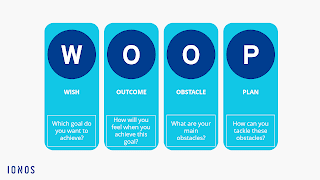HOW TO SET A GOALS
Here is the some master key for goal setting.
Goal setting is a crucial process for personal and professional development. Various formulas and frameworks can help set effective goals. Here are some popular ones:
1. SMART Goals
The SMART criteria help ensure that goals are clear and reachable. SMART stands for:
- Specific: Clearly define the goal.
- Measurable: Quantify or suggest an indicator of progress.
- Achievable: Ensure the goal is realistic and attainable.
- Relevant: Make sure the goal matters to you and aligns with other relevant goals.
- Time-bound: Specify when the goal will be achieved.
Example: "I will increase my sales by 15% within the next quarter by improving my sales pitch and following up with clients more consistently."
2. HARD Goals
HARD goals focus on the emotional and intrinsic motivation behind goals:
- Heartfelt: The goal should mean something personally.
- Animated: Visualize the goal and see it vividly in your mind.
- Required: The goal should feel necessary.
- Difficult: The goal should be challenging but not impossible.
Example: "I will complete a marathon in under 4 hours within the next year by training consistently and overcoming my current physical limits."
3. WOOP Goals
The WOOP method combines positive thinking with realistic planning:
- Wish: Identify a meaningful wish or goal.
- Outcome: Visualize the best possible outcome.
- Obstacle: Recognize the main obstacle standing in your way.
- Plan: Create an if-then plan to overcome the obstacle.
Example: "Wish: I want to write a novel. Outcome: I will feel accomplished and fulfilled. Obstacle: I often get distracted. Plan: If I feel distracted, then I will take a 5-minute break and return to writing."
4. OKRs (Objectives and Key Results)
OKRs are commonly used in organizations to set and communicate goals and results:
- Objective: What you want to achieve.
- Key Results: Measurable milestones to track progress toward the objective.
Example:
- Objective: "Improve customer satisfaction."
- Key Results:
- Reduce customer response time to under 2 hours.
- Increase customer survey scores to 90%.
- Resolve 95% of customer complaints within the first contact.
5. BHAG (Big Hairy Audacious Goals)
BHAGs are long-term, ambitious goals that can inspire and drive organizations or individuals:
- Big: Significant in size and scope.
- Hairy: Challenging and complex.
- Audacious: Bold and daring.
Example: "To become the leading eco-friendly company in the world within the next 20 years by innovating sustainable products and practices."
6. CLEAR Goals
CLEAR goals are designed to adapt to the fast-paced modern world:
- Collaborative: Encourages teamwork and collective effort.
- Limited: Focuses on a limited number of goals to avoid dilution.
- Emotional: Engages emotions to increase motivation.
- Appreciable: Breaks large goals into smaller, actionable steps.
- Refinable: Allows for flexibility and adjustments as needed.
Example: "I will launch a new product in 6 months by collaborating with the design and marketing teams, breaking the project into weekly tasks, and adjusting the plan based on customer feedback."
Using these frameworks, you can set goals that are well-defined, motivating, and achievable, helping you to stay focused and track your progress effectively.







0 Comments
Post a Comment